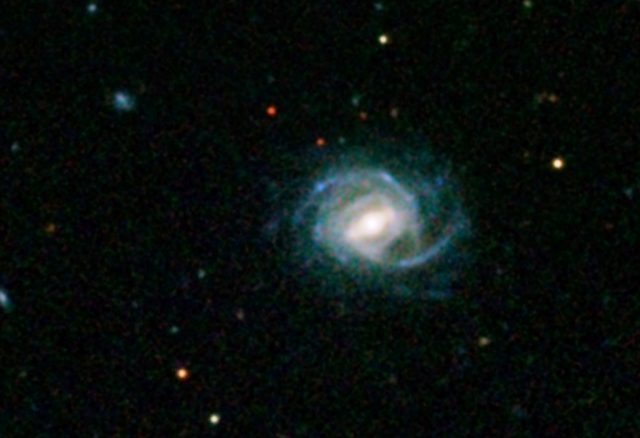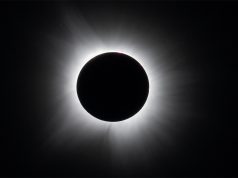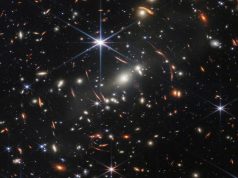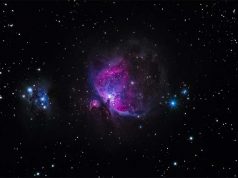LOS ANGELES, CALIFORNIA — Thanks to an amplified image produced by a gravitational lens and the Gran Telescopio CANARIAS, a team of scientists have discovered one of the brightest galaxies known from the epoch when the universe had 20 percent of its present age.
The discovery, recently published in an article in the Astrophysical Journal Letters, shows that the distant galaxy is about a thousand times brighter than the Milky Way.
“Thanks to the gravitational lens produced by a cluster of galaxies between ourselves and the source, which acts as if it was a telescope, the galaxy appears 11 times bigger and brighter than it really is, and appears as several images on an arc centred on the densest part of the cluster, which is known as an ‘Einstein Ring’,” first author of the article Anastasio Daz Snchez said in a statement.
According to Einstein’s theory of General Relativity when a ray of light passes close to a very massive object, the gravity of the object attracts the photons and deviates them from their intial path. This phenomenon, known as gravitational lensing, is comparable to that produced by lenses on light rays, and acts as a sort of magnifier, changing the size and intensity of the apparent image of the original object.
By using this effect, a team of scientists from the Polytechnic University of Cartagena (UPT) and the Instituto de Astrofisica de Canarias (IAC) has discovered the very distant galaxy, some 10 thousand million light years away.
It is the brightest of the submillimetre galaxies, a class of ultraluminous infrared galaxies, according to the researchers. To measure it researchers used the Gran Telescopio Canarias (GTC) at the Roque de los Muchachos Observatory on the island of La Palma, in the Canaries, Spain.
In order to find the brightest galaxies, researchers carried out a search of the whole sky, combining the data bases of NASA’s WISE satellite and European Space Agency’s Planck satellite.
The galaxy is notable for having a high rate of star formation. It is forming stars at a rate of 1,000 solar masses per year, compared to the Milky Way which is forming stars at a rate of some twice a solar mass per year, according to the new study.
“This type of objects harbour the most powerful star forming regions known in the universe. The next step will be to study their molecular content,” said co-author of the article Susana Iglesias-Groth.










